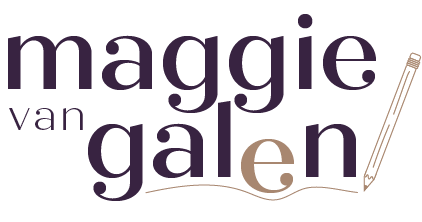Creating multiple pieces of content from one inspiration
How do you take one idea and break it down into several different pieces of content? It all starts with inspiration.
The most important part of the writing process is getting started. It can be frustrating when you feel you can’t find your mojo. My go-to place for inspiration is mamma nature, no matter the season! Nature is full of natural beauty and moments completely out of your control. Moments that force you to be nothing but an observer. Try watching the snow fall on a cold night, listen to birds welcoming in spring, or take your pup for a walk through the woods. Once you get something that sparks creativity, think about how it relates to your business–perhaps a client experience or new product offering–and start weaving your words.
Nature’s Waffle Cone
That was my thought when I snapped this photo. Keep reading to see how it inspired this blog, a newsletter and a social post.
Don’t be afraid to step out of your comfort zone, tap into what you’re feeling, and be as descriptive as possible. Try asking yourself these questions:
What about this (insert inspirational moment) captures my attention?
How does it make me feel?
What does it make me think about in life and business?
What recent business experience have I had that might relate?
Write big and unencumbered … you will go back and edit later! Your mission is to keep the descriptive and creative style of your writing, with the end goal of being able to produce more content for your business.
Now that you have your story written, it’s time to hone it into a blog post.
Step 1: The blog post
A blog post is the big picture of your idea. It gives your readers a chance to dive deeper into whatever subject you’re writing about.
Blog post lengths depend a bit on the subject matter, your target audience, and what channels you are promoting on. One school of thought is your blog should be as long as it needs to be. (This is my preferred method of writing.) There are two primary versions:
Long-form → At least 1,200 words. Examples may be a more technical topic (think medical breakthrough, a new piece of manufacturing equipment, or a governmental ruling) that may lend itself to a long form.
Short-form → Less than 1,000 words. Perhaps a more conversational post (like this one, for instance) or promotional piece is better suited as a short-form post.
!!Caution!! Try not to go under 500 words. These types of blog posts are called “snackables” and don’t generally get as much engagement.
All that being said, the consensus is that longer is better. Why, you might ask? Because people want more information and are willing to spend time reading and engaging if it’s well written. As a business, you can include more SEO words in a blog.
Writing this many words may seem challenging at first. The idea of describing something for 1000 words can be daunting but try not to look at it this way. Once you have the direction you want the blog to take just start writing! You will be surprised how easily you’ll get into the groove and the words will flow. Once you’ve got your story written, go back and edit it and make sure it relates to your business.
Now let’s break it apart.
Step 2: The Newsletter
The ultimate goal of a newsletter is to engage with your email list. You want to let your loyal followers know that you’re still here and what you’ve been up to, and maybe give them some food for thought.
The key to using your blog concept to write a newsletter is finding the balance between the watered-down version of the concept without losing the core value. Try these exercises:
Take that one key point from your blog post and create a condensed version. (Pro Tip: If the blog you put together contains multiple juicy nuggets of goodness, turn each one into a separate newsletter.)
This is not a bad place to use an AI tool. Drop your blog post into an AI prompt and ask it to create a one-paragraph summary. Always read and edit to ensure accuracy and (your) tone before just sending it out.
Think about what else you want to talk about in your newsletter (events, special offers, tips) that relate to the concept.
Step 3: Social media posts
Social media posts are like the highlight reel of your blog post. Think of what information you would want people to retain from your story if they only looked at it for five seconds. Here are a few helpful tips:
Include the most important details and descriptive words (think SEO here) used in your blog (i.e. the core message as it relates to your business), and put them front and center in your post. This will help retain your readers’ attention.
Pull quotes, create seasonal visuals, or ask engaging questions like “What’s your favorite (insert season) writing ritual?”
Have your call to action (CTA) be to either sign up for the newsletter or lead them back to your blog for more info.
Remember the tone of your posts may need to be modified depending on the platforms you’re working with.
Pro Tip: you should be able to pull three to five posts from one blog.
So there you have it - a blog post, a newsletter, and several social media posts all from one inspiring moment.


